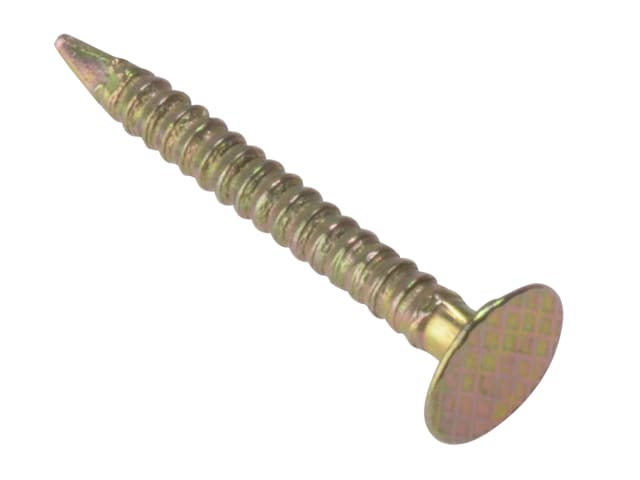Are There Specific Nails For Plasterboard?
Plasterboard is a popular alternative to traditional plaster, it provides a smooth finish for painting and decorating and also offers good qualities for fire protection, acoustic insulation and thermal efficiency. Plasterboard can be attached to various different materials, most commonly metal, timber, masonry or concrete. It is usually used for interior partition walls or ceilings and is very popular because it is lightweight and easy to install.
It is important to note that plasterboard itself can be brittle and can crack, if you use the wrong type or method of fixing. You can use screws or nails for fixing plasterboard, but specialist fixings exist which are designed to make the fixing process simple and effective. Most plasterboard is simply fixed to timber joists internally, in which case a plasterboard nail is perfectly effective for the job.
What to think about when fixing plasterboard?
The process of installing plasterboard depends on the type of project and the material being used. There are specific plasterboard screws which are usually black and pozidrive with a countersunk head. These are strong and have good load bearing qualities and come in various lengths and sizes. These are perhaps more popular for attaching plasterboard to masonry or concrete.
However, there are special types of nail for plasterboard also, and these have specific features which make them just as effective as a screw when installing plasterboard and maintaining a long term fix.
Specialist plasterboard nails
Traditionally, many people have used clout nails for fixing plasterboard. These are short nails with a large flat head. They are usually used for fixing sheet for roofing projects. However, the specialist plasterboard nails supplied by MB Direct are specially designed for fixing plasterboard and are the ideal solution for strength, versatility and aesthetic appeal.
Plasterboard screws are usually galvanised because this gives them good rust protection and corrosion resistance. This is often necessary when the plasterboard is covered in paint. Our plasterboard screws are similarly coated by a Zinc Yellow Passivation process of electroplating, which is similar to the galvanising and ‘Zinc Plated’ processes, but instead uses a yellow dye which improves the aesthetic appeal without hindering the corrosion resistance. With plasterboard, your nail heads are usually on show, so this treatment process means the nail head is easier to cover over with paint or plaster.
Our plasterboard nails have a large countersunk head which helps to spread the load and aids durability. The flat head means you can hammer it flush to the plasterboard for a smooth finish. The nail also has an indented shank and a screwed thread. This is unusual for a nail that is hammered in rather than screwed in, but importantly, this screwed thread provides resistance and hence increased holding power when in place. This means the nail can hold the same load as a screw. The screwed thread is also designed to provide an easy start when driving the nail into the plasterboard. Like all nails, there is a pointed end, but the screwed thread enables the nail to be fed into the plasterboard material more easily.
How to fix plasterboard with a plasterboard nail
- Don’t over hammer - It is very important not to over hammer a nail into plasterboard, because this can break the interior core of the plasterboard material. You should also avoid hammering and installing nails too close to the edge. This can compromise the durability of the plasterboard and the load bearing strength. You should ideally leave a gap of approximately 12mm to the edge of the board. Many people think that the risk of over hammering a nail into plasterboard means that using screws is a better option. However, you can also over screw into plasterboard and hence create the same problem.
- Which size nail? If you have 9.5mm plasterboard then you should opt for a 30mm nail, and if you have 12.5mm plasterboard you should opt for a 40mm nail.
- Hammer until flush - Hammer in the nail until it is flush. You will need to be quite precise about this. Over hammering can break the core of the plasterboard, and it can also mean you have a hole to fill before you decorate. Of course you will have a different problem if you under hammer the nail. If this is protruding from the plasterboard it will never look good when you decorate, so make sure the nail is hammered in to be flush with the surface of the plasterboard.
Contact MB Direct for your plasterboard nails
You can speak to our sales experts about the right materials and fixings for the job you need, and we can advise on price and availability where necessary, so get in touch today.